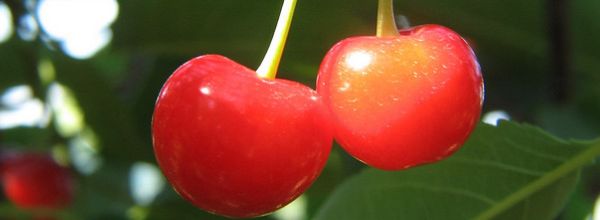What is Ethanol Precipitation of DNA?
Ethanol precipitation is a commonly used technique for concentrating and de-salting nucleic acid (DNA or RNA) preparations in an aqueous solution.
The basic procedure is that salt and ethanol are added to the aqueous solution, which forces the precipitation of nucleic acids out of the solution. After precipitation, the nucleic acids can then be separated from the rest of the solution by centrifugation. The pellet is then washed in cold 70% ethanol.
After a further centrifugation step, the ethanol is removed and the nucleic acid pellet is allowed to dry before resuspending in a clean aqueous buffer.
So how does this work?
It’s All About Solubility
First, we need to know why nucleic acids are soluble in water. Water is a polar molecule—it has a partial negative charge near the oxygen atom due to the unshared pairs of electrons, and partial positive charges near the hydrogen atoms.
Because of these charges, polar molecules like DNA or RNA can interact electrostatically with the water molecules, allowing them to easily dissolve in water.
Polar molecules can, therefore, be described as hydrophilic, and non-polar molecules, which can’t easily interact with water molecules, are hydrophobic.
Nucleic acids are hydrophilic due to the negatively charged phosphate (PO4–) groups along the sugar-phosphate backbone.
The Role of Salt
OK, so back to the protocol. The role of salt in the protocol is to neutralize the charges on the sugar-phosphate backbone.
A commonly used salt is sodium acetate. In solution, sodium acetate breaks up into Na+ and [CH3COO]–.
The positively charged sodium ions neutralize the negative charge on the PO4– groups on the nucleic acids, making the molecule far less hydrophilic and, therefore, much less soluble in water.
The Role of Ethanol
The electrostatic attraction between the Na+ ions in solution and the PO4– ions is dictated by Coulomb’s Law, which is affected by the dielectric constant of the solution. Water has a high dielectric constant, which makes it fairly difficult for the Na+ and PO4– to come together.
Ethanol, on the other hand, has a much lower dielectric constant, making it much easier for Na+ to interact with the PO4–. This shields its charge and makes the nucleic acid less hydrophilic, thus causing it to drop out of the solution.
The Role of Temperature
Incubation of the nucleic acid/salt/ethanol mixture at low temperatures (e.g., –20° or –80°C) is often recommended in protocols.
However, according to “Molecular Cloning, A Laboratory Manual” by Maniatis, Fritsch, and Sambook, this step is not necessary. Nucleic acids at concentrations as low as 20 ng/mL will precipitate effectively at 0–4°C, so incubation for 15–30 minutes on ice is sufficient.
The Wash Step With 70% Ethanol
This step is to wash any residual salt away from the pelleted DNA.
A Few Tips on Ethanol Precipitation
- Choice of salt
- Use sodium acetate (0.3 M final conc, pH 5.2) for routine DNA precipitation.
- Use sodium chloride (0.2 M final conc) for DNA samples containing SDS, since NaCl keeps SDS soluble in 70% ethanol so that it doesn’t precipitate with the DNA.
- Use lithium chloride (0.8 M final conc) for RNA. Since 2.5–3 volumes of ethanol are needed for RNA precipitation and LiCl is more soluble in ethanol than sodium acetate, it will not precipitate. But beware – chloride ions will inhibit protein synthesis and DNA polymerase, so LiCl is not good for RNA preps for in vitro translation or reverse transcription. In these cases, use sodium acetate.
- Use ammonium acetate (2 M final conc) to remove dNTPs, but do not use it to prepare DNA for T4 polynucleotide kinase reactions, as ammonium ions inhibit the enzyme.
- To increase the yield in precipitations of low concentration or small nucleic acid pieces (less than 100 nucleotides)
- Add MgCl2 to a final concentration of 0.01 M.
- Increase the time of incubation on ice before centrifugation to 1 hour.
This explanation should bring you up to speed on how ethanol precipitation works. If you want to learn more about the ins and outs of ethanol precipitation and other DNA clean-up approaches, you might want to check these out.
More Articles on Ethanol Precipitation
- Ethanol precipitation – DNA vs Isopropanol
- How to get the perfect pellet after DNA/RNA ethanol precipitation
FAQ
Q: What percentage of DNA or RNA can typically be recovered using ethanol precipitation, and how does this compare to other nucleic acid purification methods?
A: Ethanol precipitation typically recovers about 70-90% of DNA or RNA. However, this efficiency can vary depending on factors such as the length and concentration of the nucleic acids, the precise conditions used, and the purity of the reagents.
Compared to other methods like silica column-based purification, ethanol precipitation is less selective but beneficial for removing salts and small molecules.
Q: Are there alternatives to ethanol that can be used for precipitation, such as isopropanol, and how do their efficiencies and applications compare to those of ethanol?
A: Isopropanol is another solvent option for nucleic acid precipitation. It requires less volume than ethanol and is useful for minimizing solvent use in certain protocols. However, it might result in slightly lower purity.
The choice between ethanol and isopropanol depends on specific experimental needs, such as purity requirements and downstream applications.
Q: How does the protocol for ethanol precipitation change when scaling up for larger volumes or higher concentrations of nucleic acids? Are there different considerations or adjustments needed?
A: For scaling up ethanol precipitation, the basic approach remains consistent, but adjustments may be needed for larger volumes or higher concentrations.
Optimizing ethanol volumes and salt concentrations can help ensure efficient nucleic acid precipitation.
Adequate mixing and temperature control are crucial for uniform precipitation across larger scales.
Save time and hassle with Bitesize Bio’s Lab Math Calculator! This preloaded spreadsheet makes common lab calculations, like solution preparation and DNA concentration, quick and easy.
Download the Lab Math Calculator and watch our short video guide to get started.
Originally published December 4, 2007. Reviewed and republished March 2021 and May 2024.






